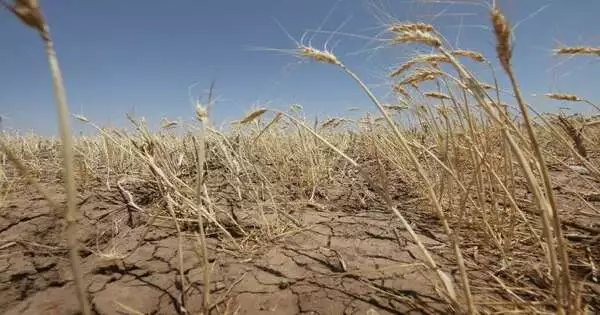A study published on Tuesday found that the risks of harvest failures in multiple global breadbaskets have been underestimated. The authors of the study suggested that the findings should serve as a “wake-up call” regarding the threat that climate change poses to our food systems.
Climate and crop models are utilized to determine just what the impacts could be as the world warms because food production is both a key source of emissions that contribute to the warming of the planet and highly exposed to the effects of climate change.
In the most recent study, which was published in Nature Communications, German and American researchers investigated the possibility of low yields in multiple major food-producing regions at the same time.
“We need to be prepared for these types of complex climate risks in the future, and the models don’t appear to capture this at the moment,”
Lead author Kai Kornhuber, a researcher at Columbia University.
According to lead author Kai Kornhuber, a researcher at Columbia University and the German Council on Foreign Relations, these occurrences can result in price increases, food insecurity, and even civil unrest.
According to what he explained to AFP, with increasing concentrations of greenhouse gases, we are entering uncharted waters where we are struggling to really have an accurate idea of what type of extremes we’re going to face.”
“We show that these kinds of events that happen at the same time are really underrated.”
Between 1960 and 2014, observational and climate model data were examined, followed by projections for the years 2045 to 2099.
The jet stream—the air currents that control weather patterns in many of the world’s most important crop-producing regions—was the first topic of study for researchers.
They discovered that key agricultural regions in North America, Eastern Europe, and East Asia experience a reduction in harvests of up to 7% as a result of a “strong meandering” of the jet stream in the form of large waves.
Additionally, the researchers discovered that this had previously been associated with simultaneous crop failures.
According to Kornhuber, one example occurred in 2010, when the jet stream fluctuations were linked to extreme heat in parts of Russia and devastating floods in Pakistan, both of which damaged crops.
Assessment of the risks
The study also looked at how well computer models evaluate these risks. It found that, while they are good at showing the jet stream’s movement through the atmosphere, they underestimate the magnitude of the extremes it causes on the ground.
According to Kornhuber, the study ought to serve as “a wake-up call in terms of our uncertainties” regarding the effects of climate change on the food industry, which will result in more intense and frequent weather extremes and more complex combinations of those extremes.
He stated, “The models at the moment appear to not capture this,” and added, “We need to be prepared for these types of complex climate risks in the future.”
Volker Turk, the head of the United Nations’ human rights department, issued a stern warning on Monday, describing a “truly terrifying” dystopian future in which people starve and suffer due to extreme weather that is caused by climate change.
He criticized world leaders for their short-term thinking and stated at a UN debate on the right to food that more than 828 million people would be hungry in 2021 and that climate change could increase that number by 80 million by the middle of the century.
More information: Kai Kornhuber, Risks of synchronized low yields are underestimated in climate and crop model projections, Nature Communications (2023). DOI: 10.1038/s41467-023-38906-7. www.nature.com/articles/s41467-023-38906-7





